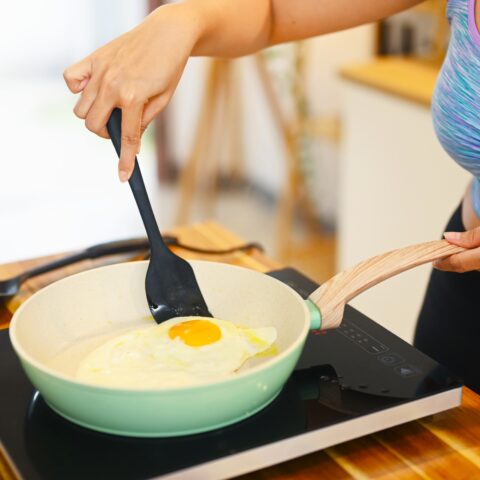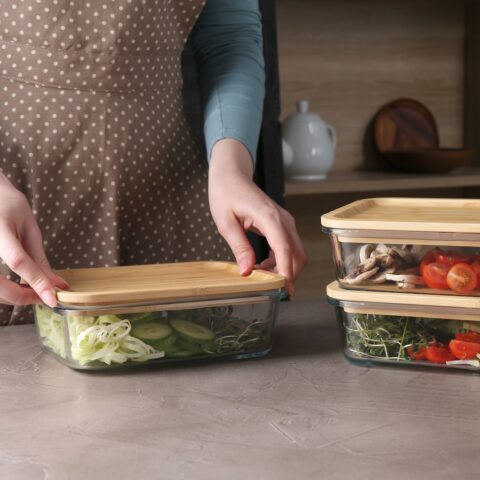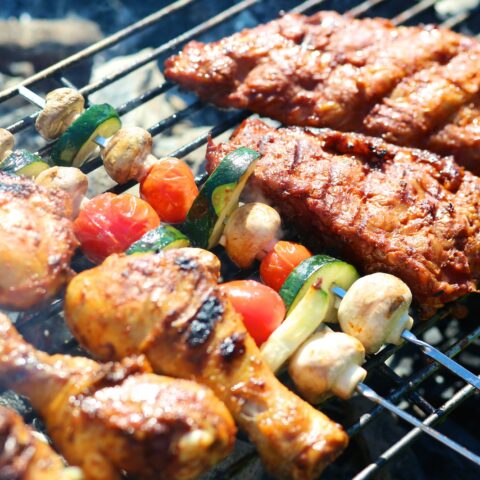Conquer the Week with Easy Lunch Meal Planning
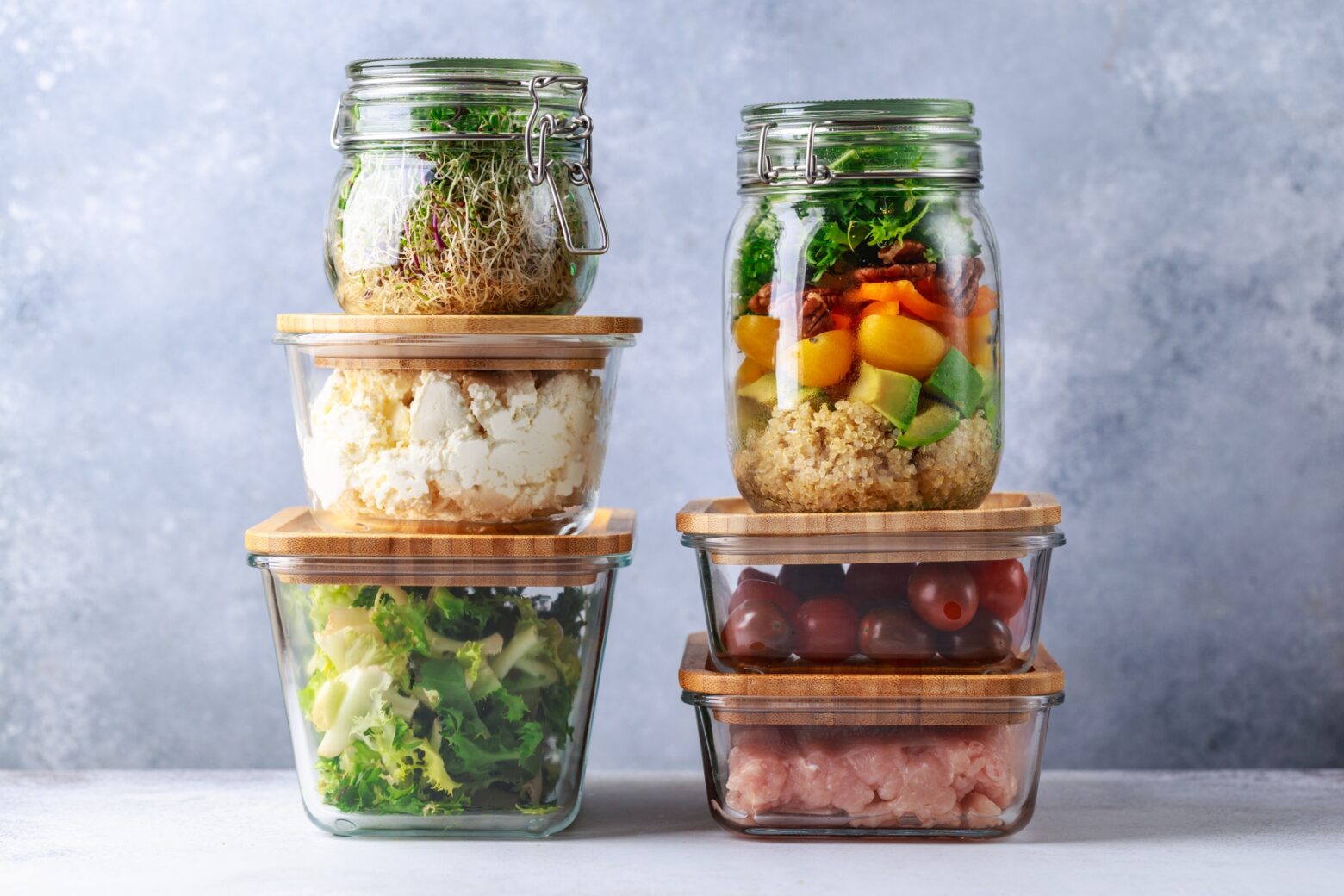
Work is a notoriously hard place to eat well because you’re busy and away from your kitchen. And if you work in a typical office, school, or hospital, temptations surround you. There are vending machines and boxes of donuts brought by well-meaning coworkers. Holidays and birthdays are celebrated with food, often of the sugary, indulgent variety. And then there are the days when you’re so busy that you unintentionally skip lunch and end up crashing in the afternoon.
Fortunately, you can have convenient, healthy, and energy-boosting lunches on hand throughout the week with just a little prep work. We’ve created an easy lunch meal planning strategy you can use to prep grab-and-go meals that will keep you satisfied and energized.
RELATED: Sample Paleo Meal Prep for the Work Week
Your Workweek Lunch Meal Planning Guide
Start by choosing three recipes. We recommend picking one from each of these categories:
- Salad (2 servings)
- Power Bowl (2 servings)
- Breadless Sandwich (1 serving)
By making multiple servings of fewer recipes, you end up with five lunches packed and ready to go with you to work.
Tips for Successful Lunch Prepping
You can integrate your lunch prepping into other meal prep for the week. Make a full batch of a recipe, pack your lunch portion, then save the other servings for weeknight dinners—freezing portions that will be enjoyed later in the week. You’ll thank yourself later; having dinner ready in the evenings can be a lifesaver!
You can also stagger making your work lunches by prepping one recipe every couple days if you don’t have the time to batch cook over the weekend. Leftovers are also great for incorporating into your lunch recipes, like leftover protein repurposed in a salad or power bowl, or leftover veggies used for breadless buns.
Keep in mind how perishable ingredients are when planning your lunch meals. Take foods that spoil quickly to work earlier in the week. Save or freeze those that keep well for later in the week.
- Foods that spoil quickly: Fresh berries, avocados, bananas, broccoli.1
- Foods that keep well: Winter squash, cabbage, beets, garlic, sweet potatoes, carrots, pumpkin, onions, celery, rutabagas, winter radishes.2
RELATED: Safe Food Storage Containers and Best Practices
Salads
Salads are very adaptable. Every ingredient can be exchanged for something you prefer or have on hand. It’s easy to swap cooked chicken breast for leftover steak or replace arugula with shredded Brussels sprouts.
To keep your salad fresh, follow these tips when prepping:
- Pack salads in a Mason jar or large container so you can easily seal and shake when ready to eat.
- All ingredients need to be as dry as possible; wash veggies and lay them out on towels to dry or use a salad spinner.
- Always pack dressings separately (4-ounce Mason jars work well here).
- Store wet toppings and ingredients (like cut tomatoes) separately and pack leafy greens toward the top of the container.
- Save cutting foods that may spoil fast (e.g., apples, avocado) for the day of.
Choose one salad from the list below and follow the tips for keeping it fresh throughout the week.
RELATED: How to Make Easy Batch Salads
Fall Flavors Mason Jar Salad
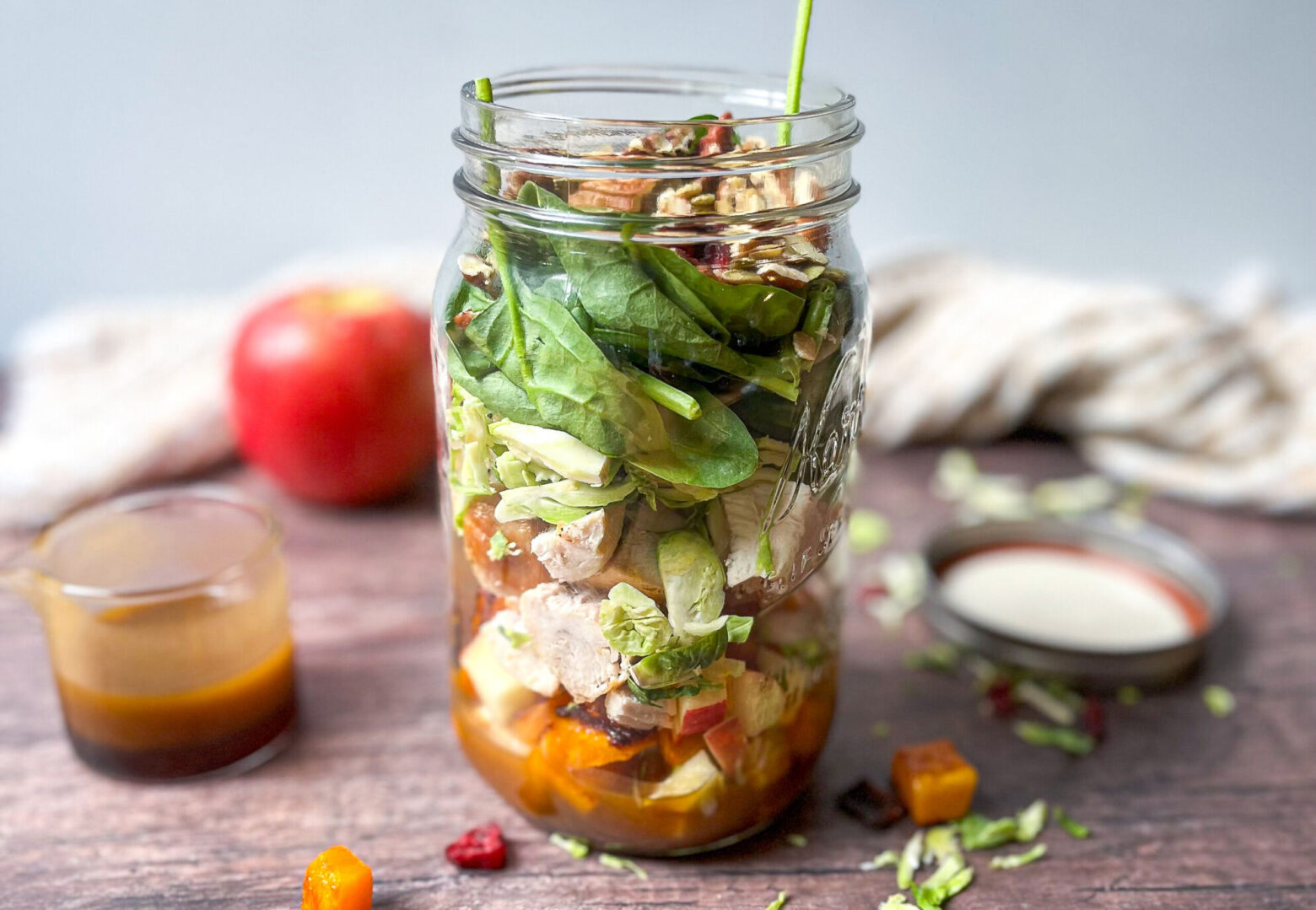
- This recipe was made to be portable! Just remember to place the greens toward the top of the jar, keep the dressing separate, and save the apple for slicing until you’re ready to eat.
Kale Salad with Grilled Peaches
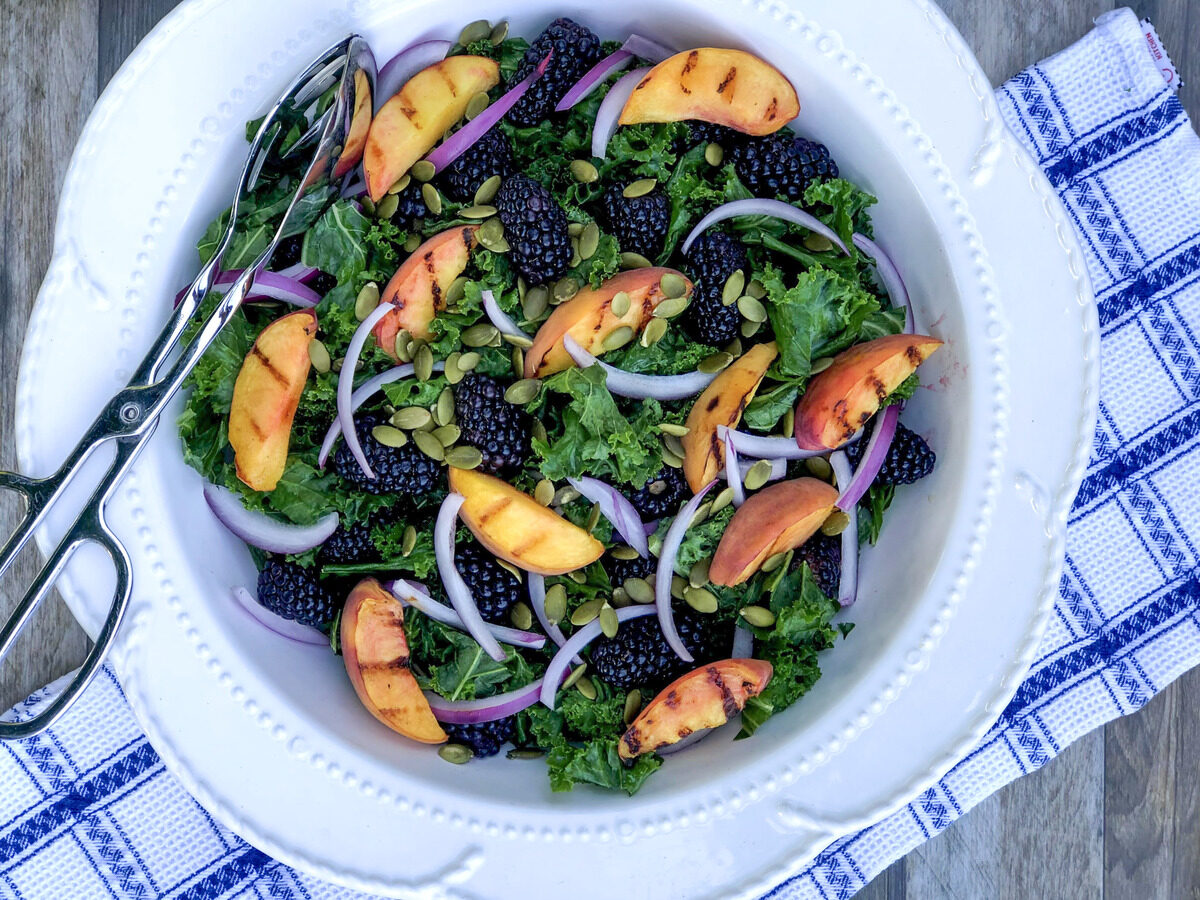
- Keep peaches and dressing separate from the rest of the ingredients.
- Have this earlier in the week to avoid fruit spoiling.
Pork Spring Roll Salad
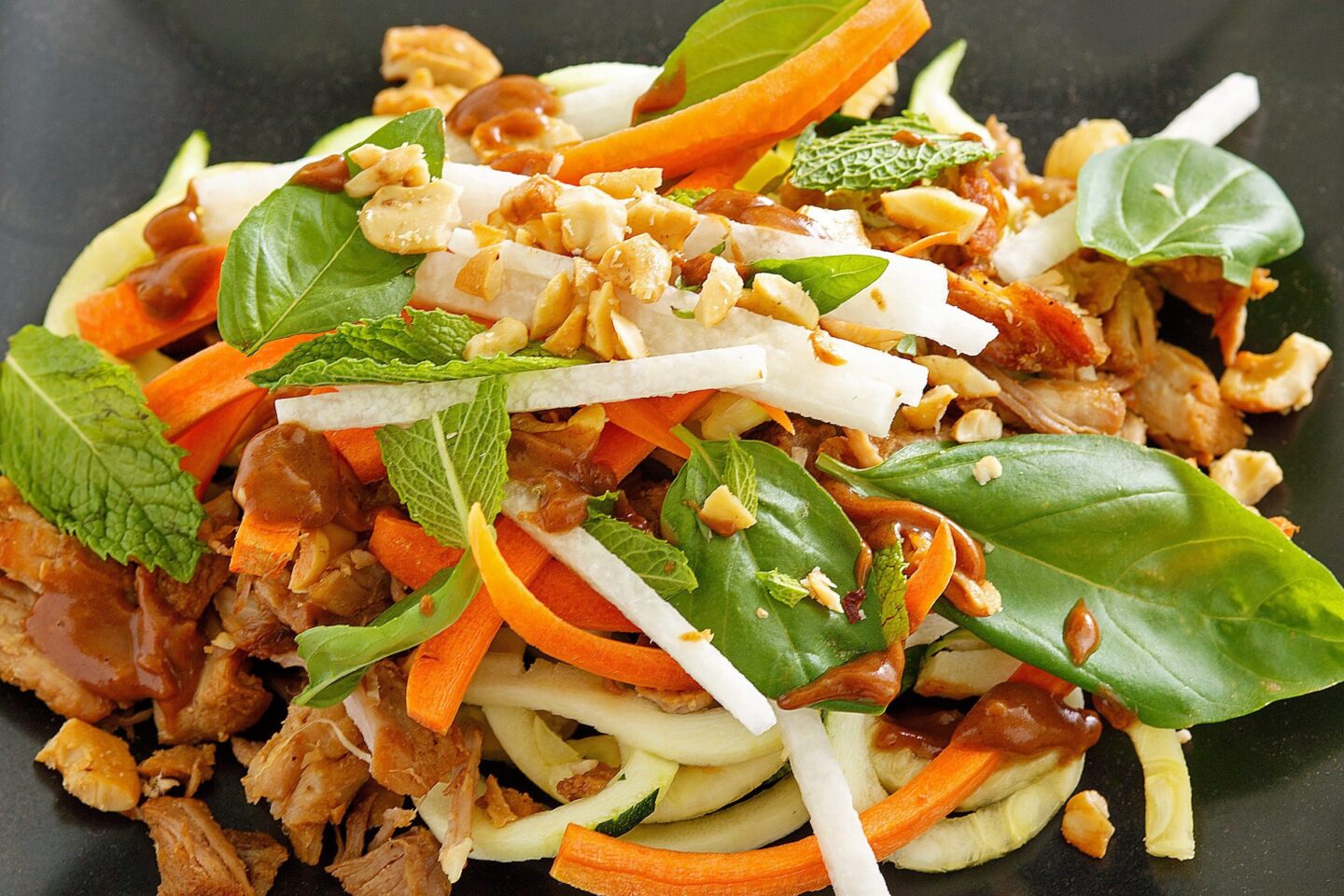
- Place veggies, herbs, and nuts in a Mason jar or large container. Reserve pork and dressing in separate containers.
- This recipe serves four, so you can either halve the ingredients or save the extra for dinner during the week.
Red Root Kale Salad
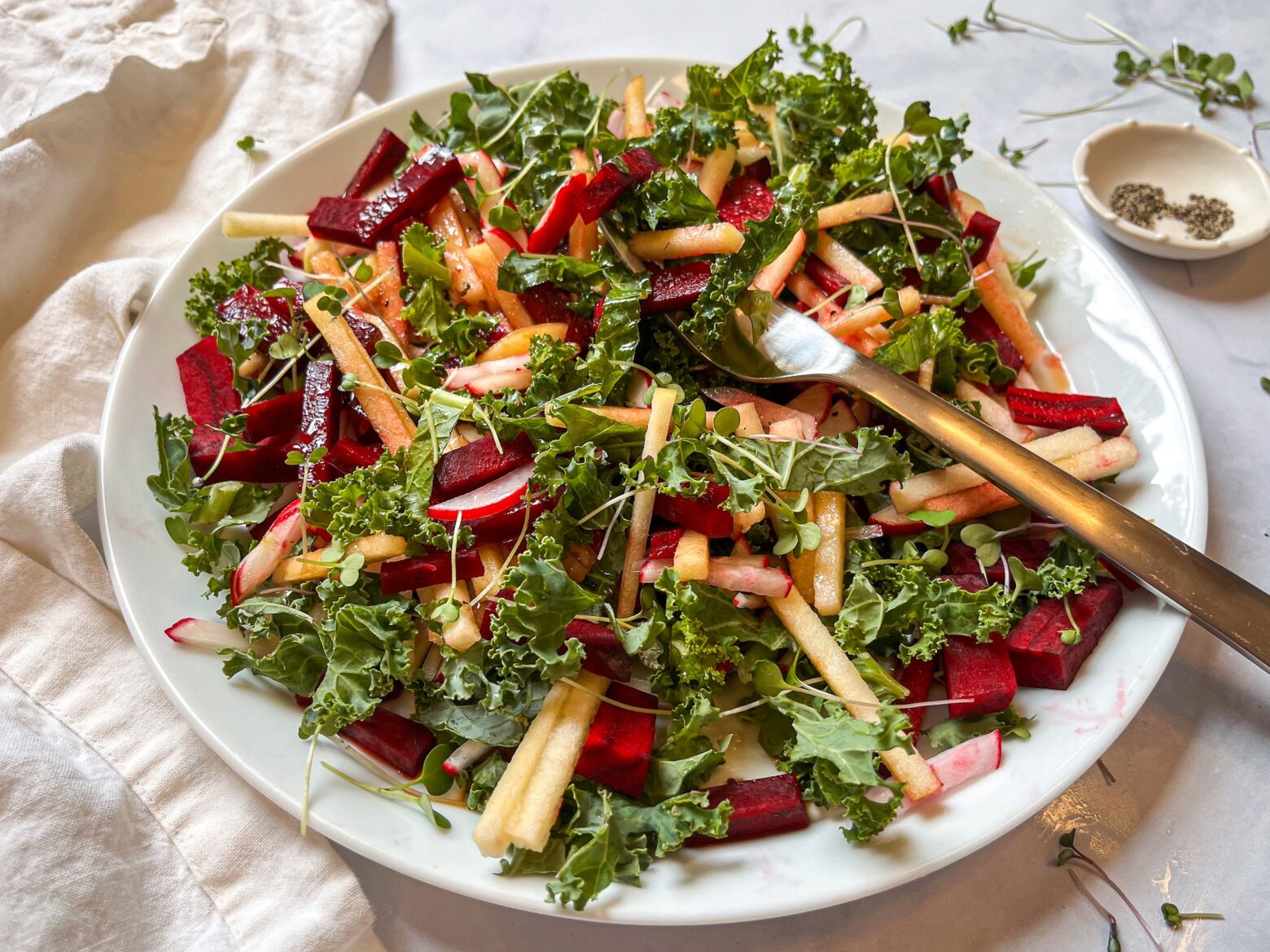
- If you prepare this salad with microgreens, have it earlier in the week to avoid spoiling.
- Keep the dressing separate and save the apple for slicing until you’re ready to eat.
Spring Mason Jar Salad

- This recipe was made to be portable! Just remember to place the greens toward the top of the jar and keep the egg, chicken, and dressing in separate containers.
- This makes one serving, so double the ingredients or choose a breadless sandwich below to have twice during the week.
Power Bowls
Power bowls are a fantastic lunch option. The flavor combinations are limitless, they travel well, and they’re easy to eat at your desk or in the break room. Power bowls often feature filling roasted veggies and ground meat, so they make satisfying meals. In the fall and winter, squash like butternut, acorn, or spaghetti can also double as bowls when stuffed with a hearty mixture.
Be sure to store any sauces or dressings in a separate container. If your chosen power bowl contains raw veggies, consider storing proteins separately so they can be reheated before eating.
Choose one power bowl from the list below and follow the tips for keeping it fresh throughout the week.
Chicken Fajita Bowl with Cauliflower Rice
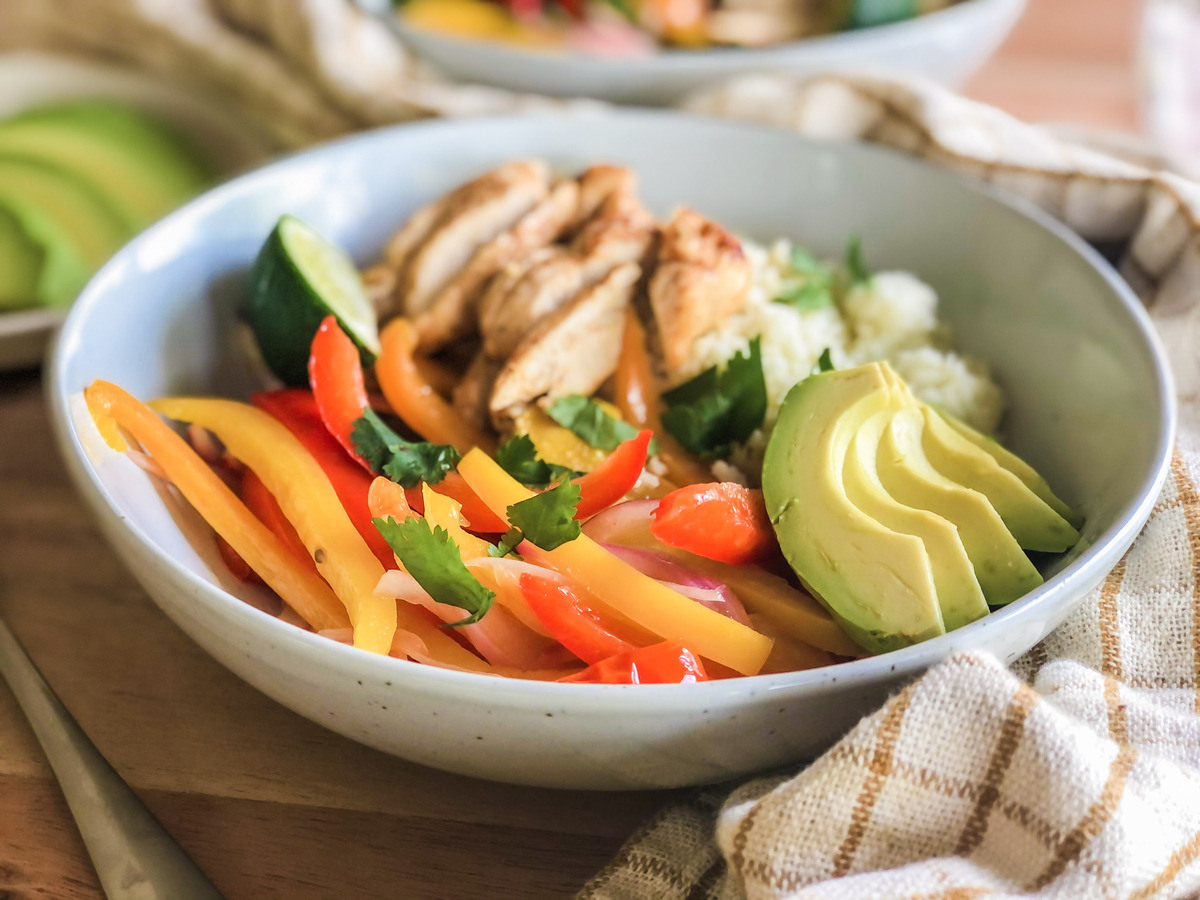
- Reserve avocado and slice immediately before eating.
- Use cherry tomatoes instead of diced tomatoes—they’ll keep longer.
Ground Turkey Butternut Squash Bowls
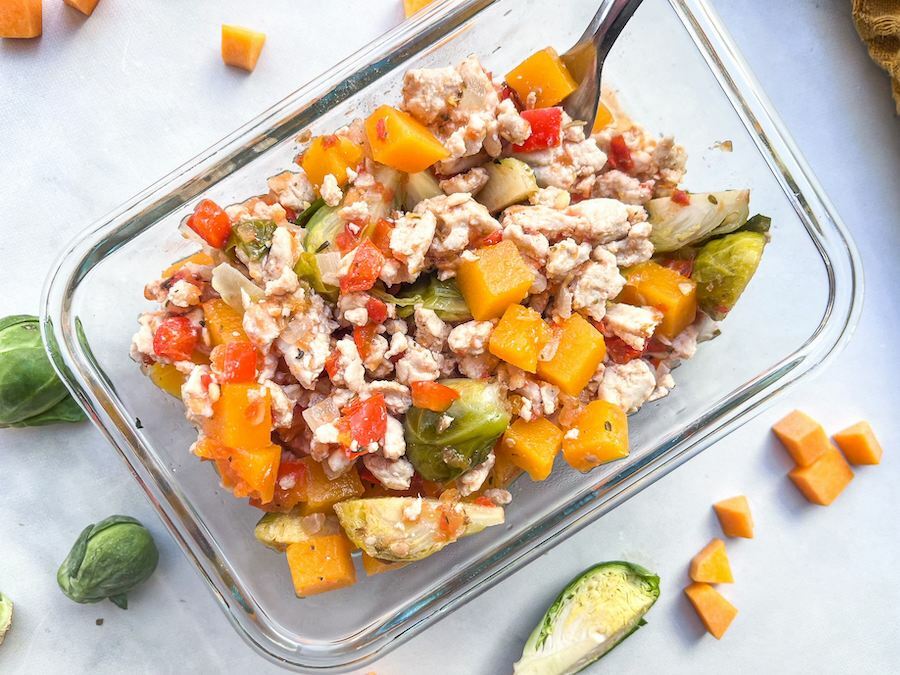
- This recipe serves four—consider freezing the extras in single servings for a last-minute meal.
Salmon Poke Bowl with Spicy Lime Mayo
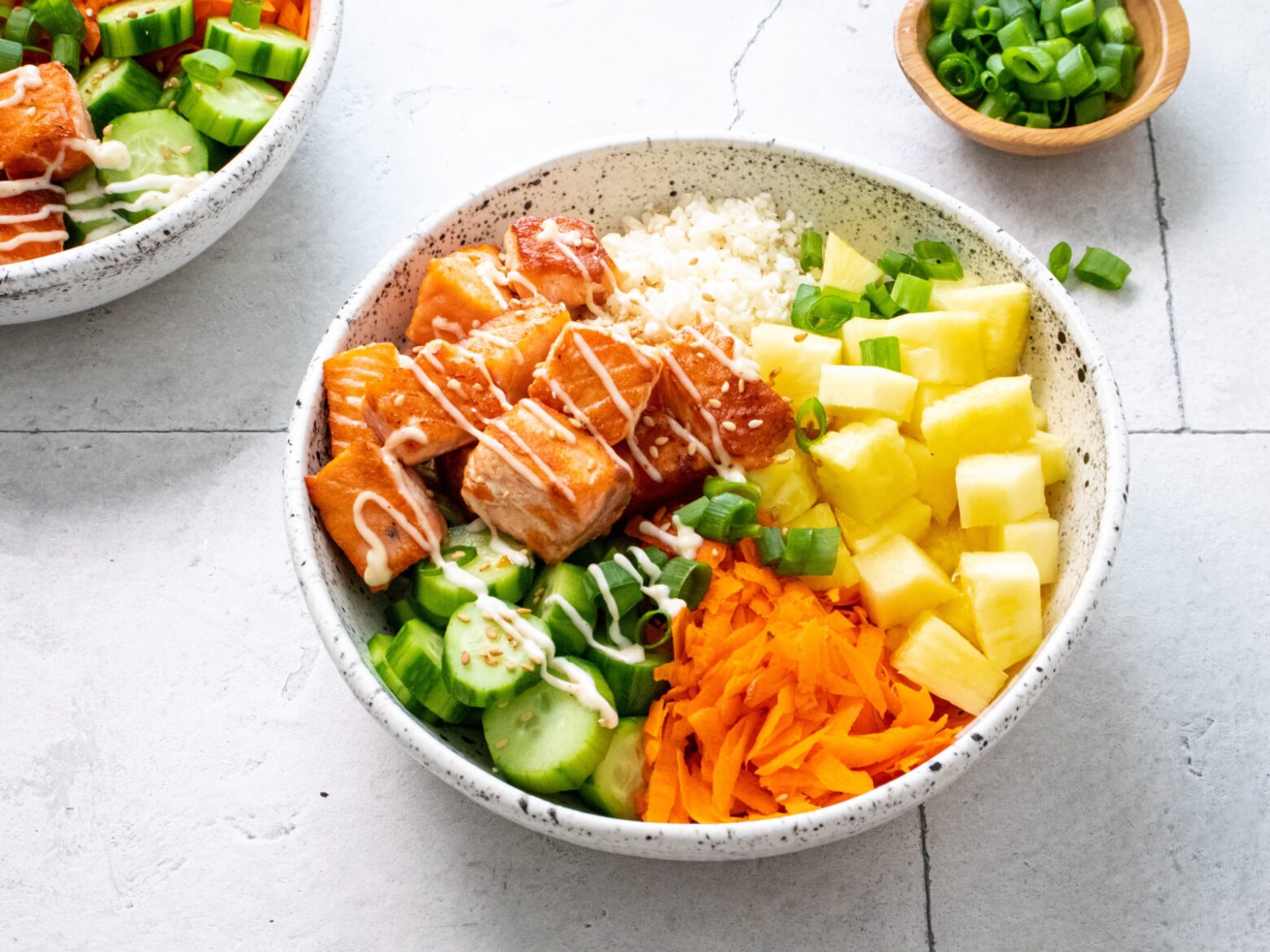
- Store the spicy lime mayo and pineapple in separate containers.
- Pack the salmon in a separate container and reheat it for lunchtime.
Sweet Potato Bowl
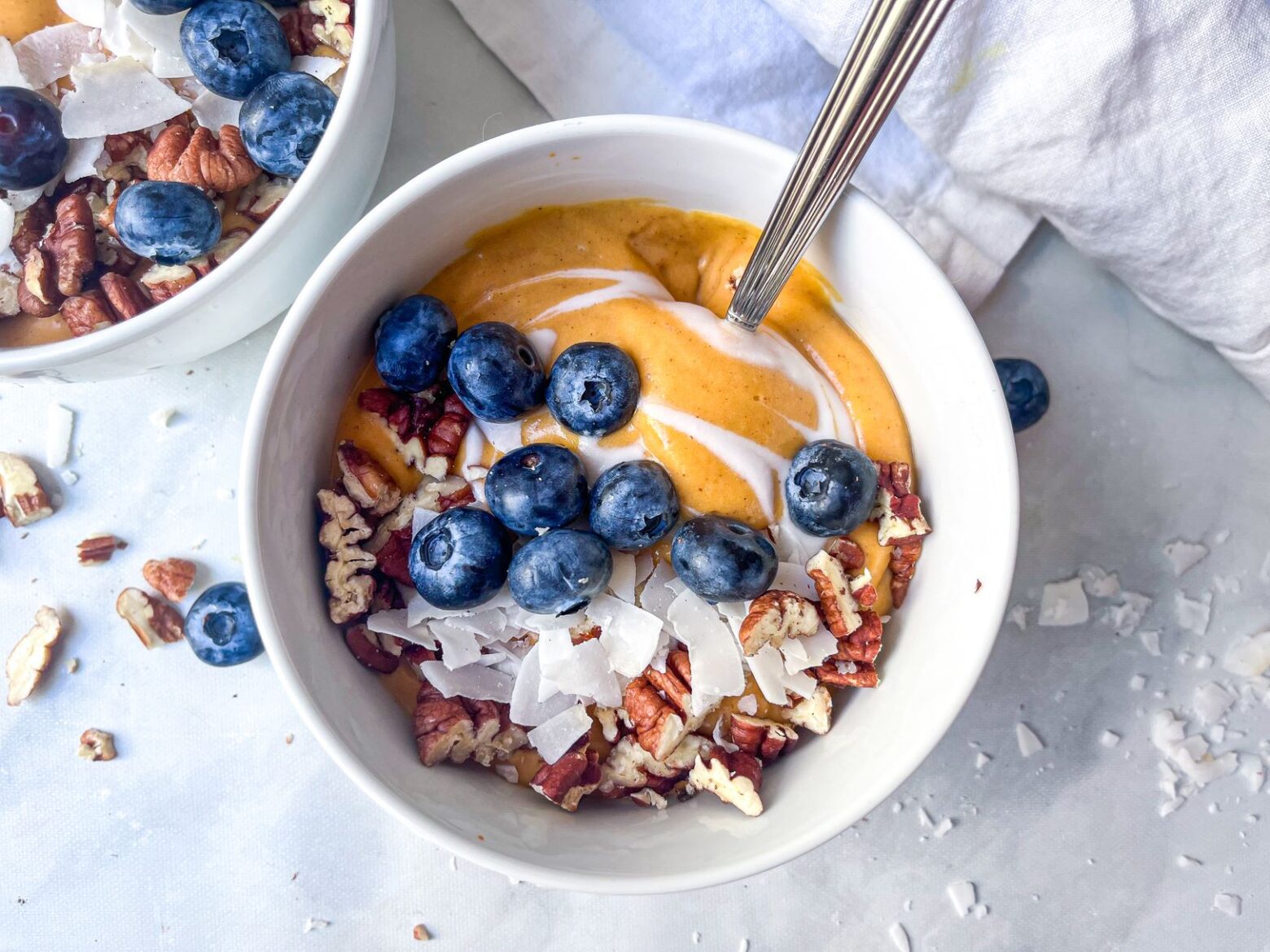
- Store blueberries, pecans, and coconut flakes in a separate container.
- If the mixture is too thick when eating, mix in a splash of milk or water to thin it out.
- Have this earlier in the week so the mixture doesn’t spoil.
Vegan Buddha Bowl with Avocado Lime Dressing
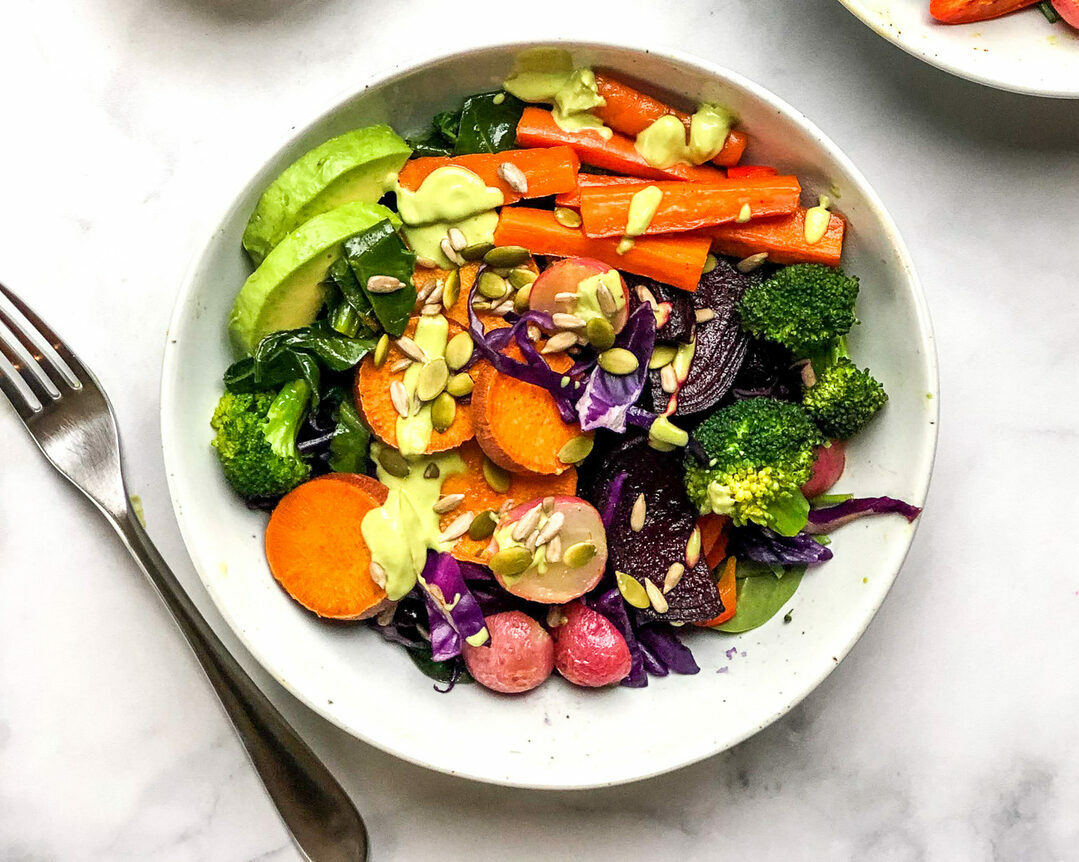
- Keep the dressing in a separate container.
Breadless Sandwiches
Incorporating breadless sandwiches, wraps, and stuffed vegetables into your menu is a game-changer! They are easy to make, fun to eat, and packed with nutrition.
If you prepare the salad and power bowl with two servings each, you only need one serving per week of a breadless sandwich when creating your lunch meal plan. Consider making a full recipe, though—they are great to have around for snacks or last-minute side dishes.
Breadless sandwiches can be made with either raw or cooked vegetables. Like a classic sandwich, you can fill it with meats, other veggies, and sauces. Below are some options for stuffed veggies and breadless sammies.
- Lettuce: The original breadless sandwich; wrap lettuce around just about anything!
- Tomatoes or Peppers: Try them stuffed with Mexican or Italian flavors, or use tomato slices as breadless buns.
- Sweet Potatoes: These can be made into sweet or savory boats or sliced for breadless buns.
- Mushrooms: Stuff them with a mixture of herbs and root vegetables or use them as the ends for your breadless sandwich.
- Zucchini or Cucumbers: Try them stuffed with fresh, summery flavors or slice them to use in place of crackers.
These options are a great way to use up leftovers in the fridge. You can pack ingredients in separate containers and assemble them at work, or wrap stuffed vegetables in a bag to keep the ingredients together.
If you need more inspiration for stuffed veggies and wraps, choose from one of the recipes below and follow the tips to keep it fresh throughout the week.
Curried Tuna Lettuce Wraps
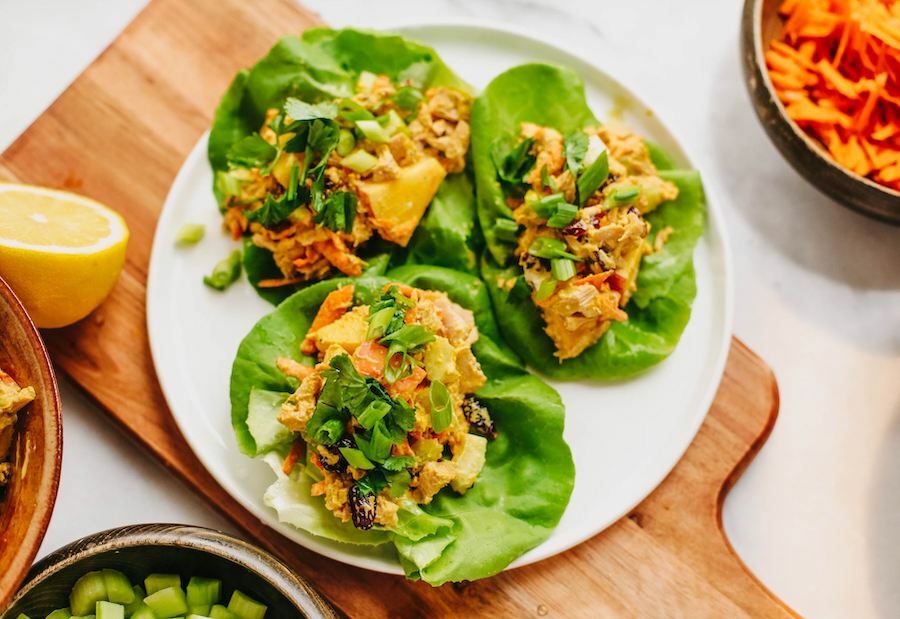
- Pack tuna salad and lettuce leaves separately and assemble at work.
- Have this earlier in the week so the mixture doesn’t spoil.
- This recipe serves four, so you can halve the ingredients and save the rest for an easy weeknight dinner.
Mexican Stuffed Peppers
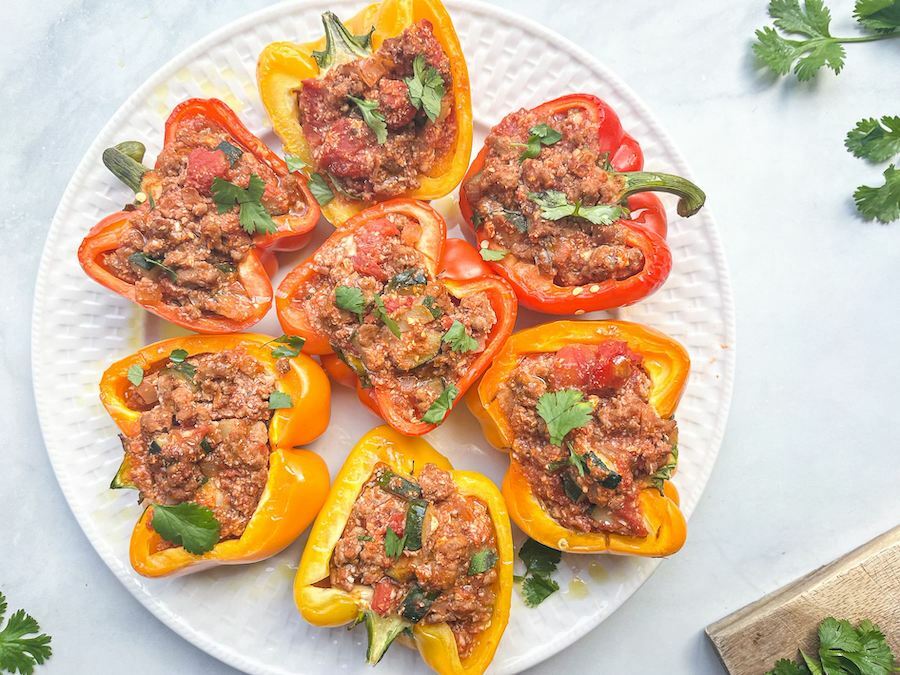
- This recipe serves six, so you can reduce the amount of ingredients needed or serve the extras as a comforting family dinner.
Sweet Potato Breakfast Boats
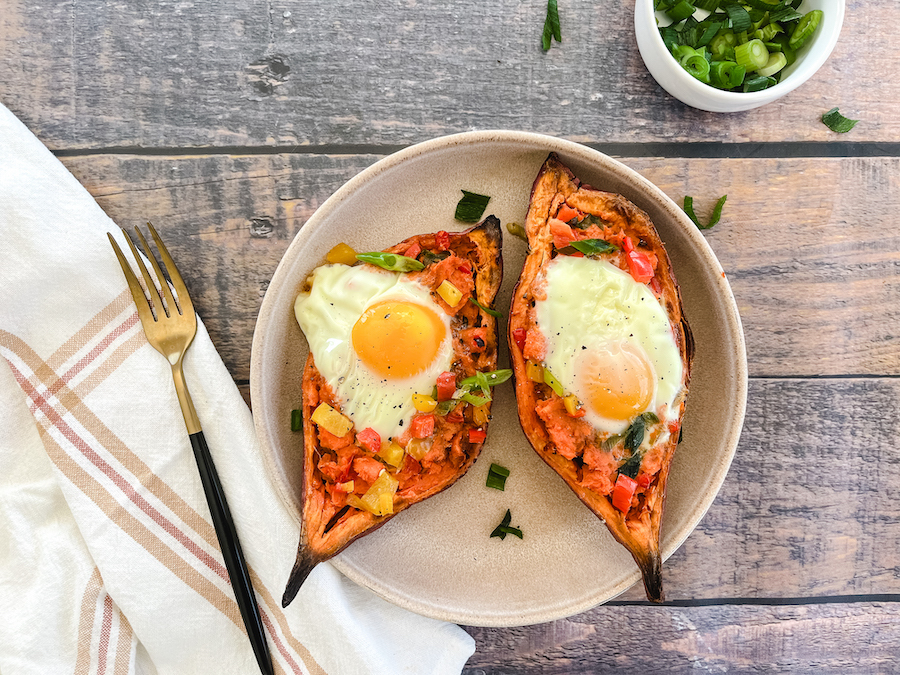
- Have this earlier in the week while the eggs are fresh.
- This recipe serves two so you can halve the ingredients if needed.
Turkey-Stuffed Portabella Mushrooms
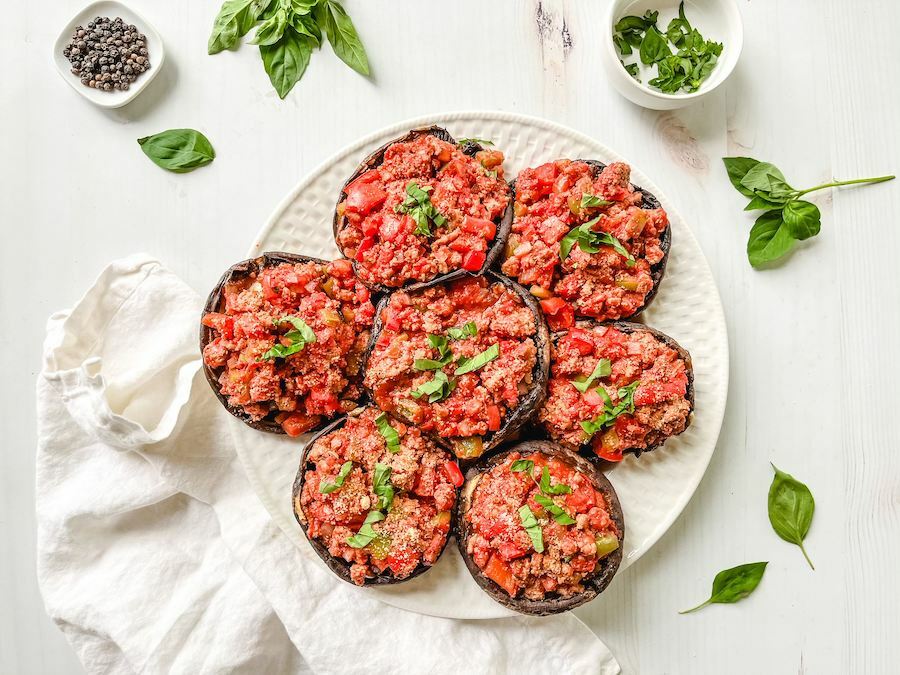
- This recipe serves four, so you can reduce the ingredients needed or save the rest for an easy weeknight dinner.
Turkey-Stuffed Zucchini Boats
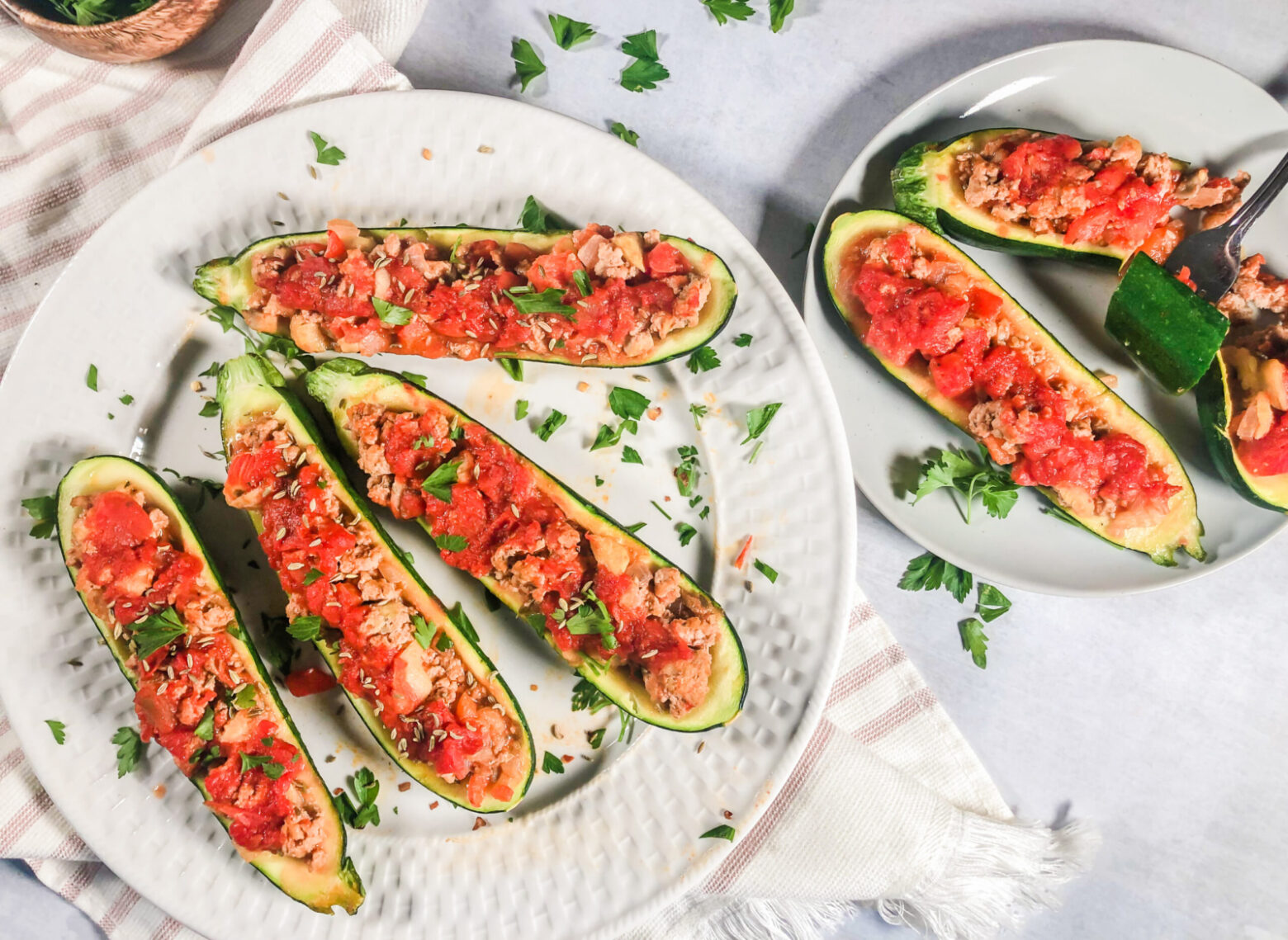
- This recipe serves eight, so you can reduce the ingredients needed or save the rest for a family dinner.
Prep Your Way to Success
With just a little preparation and planning, you’ll make it through your workweek feeling nourished, satisfied, and totally in control. By following this lunch meal planning strategy, you’ll not only stick to your goals, but actually look forward to lunchtime. So grab those containers and get prepping!
References
- (2024). These 10 Foods Spoil the Fastest—Here’s How to Help Them Last Longer. Real Simple. https://www.realsimple.com/foods-that-spoil-the-fastest-8692812
- Ali, L. M. (2024, May 2). 12 Long-Lasting Vegetables to Add to Your Produce List. GoodRx. https://www.goodrx.com/well-being/diet-nutrition/long-lasting-vegetables
Hayley Fisher
Hayley is an herbalist with a green thumb who writes about natural health, wellness, and nutrition. She aspires to empower her readers with the knowledge of how to take better care of themselves.
More About The Author

